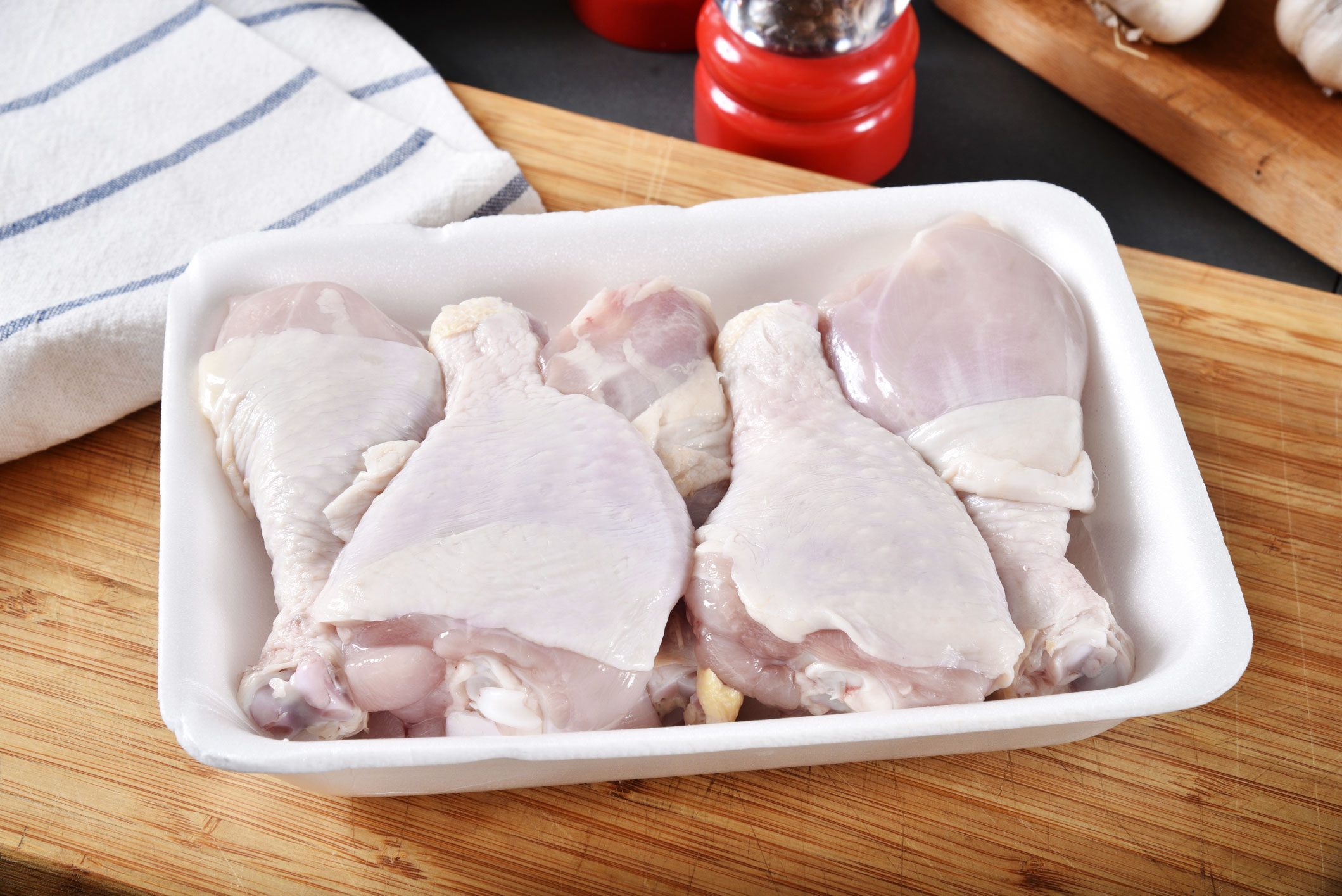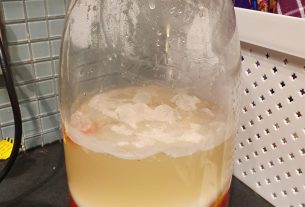When it comes to the sell-by date on chicken, should we strictly adhere to it or trust our senses?
The answer might surprise you.
While the sell-by date serves as a helpful guideline for retailers, as consumers, we can sometimes push the boundaries.
Join us on a journey through the fascinating world of chicken expiration dates, and discover the truth behind this culinary conundrum.
sell by date on chicken
The sell-by date on chicken is a guideline for retailers indicating how long to display the chicken for sale.
For consumers, the sell-by date serves as a useful indication of freshness, but it is not a foolproof measure of safety.
Properly stored chicken can still be consumed safely past the sell-by date if it shows no signs of spoilage, such as a grayish hue, slimy texture, or a strong foul smell.
To ensure safety, it is recommended to cook or freeze chicken as soon as possible after the sell-by date, and to use raw chicken within 1-2 days if stored in the refrigerator.
Freezing chicken can extend its safe consumption period by halting bacterial growth, but thawed chicken should be used immediately and not refrozen.
It is crucial to physically examine the chicken for any signs of spoilage before consuming.
Key Points:
- Sell-by date on chicken is a guideline for retailers for how long to display the chicken for sale.
- Sell-by date is a guideline for freshness, but not a guarantee of safety.
- Properly stored chicken can still be consumed past the sell-by date if it shows no signs of spoilage.
- It is recommended to cook or freeze chicken as soon as possible after the sell-by date for safety.
- Freezing chicken can extend its safe consumption period, but thawed chicken should be used immediately.
- It is important to visually inspect the chicken for signs of spoilage before consuming.
sell by date on chicken – Watch Video
💡
Pro Tips:
1. The sell by date on chicken is intended to ensure freshness and quality, but did you know that it is not an expiration date? As long as chicken is properly stored and cooked, it is generally safe to consume even after the sell by date has passed.
2. In the United States, sell by dates on chicken are not federally regulated, meaning each manufacturer can use their own system. This can lead to confusion among consumers, as different brands may use different formats or wording.
3. While most sell by dates on chicken are accurate in indicating peak freshness, it’s important to note that they are often conservative estimates. Chicken can remain safe for several days beyond the sell by date if handled and stored properly.
4. The sell by date on chicken is typically determined based on the date of slaughter and packaging, rather than the actual expiration of the meat. Therefore, it’s possible for chicken to still be perfectly fresh even when the sell by date is approaching.
5. When purchasing chicken, it’s recommended to pay attention to factors beyond the sell by date, such as the color, smell, and texture of the meat. These sensory indicators are more reliable in determining whether the chicken is safe to eat, especially if the sell by date is close or has passed.
Chicken Sell By Date: A Guideline For Retailers
The “Chicken Sell By Date” is an important guideline for retailers indicating how long to display chicken for sale. This date serves as a reference point for store employees to know when to remove the product from the shelves and replace it with fresh stock. Retailers rely on this date to maintain quality standards and ensure that customers are getting the freshest chicken possible.
It is crucial for retailers to adhere to the sell-by date to avoid selling expired chicken. This helps to build trust with customers and prevent any potential health risks associated with consuming spoiled poultry. Retailers should always prioritize the safety and satisfaction of their customers by following the sell-by date guidelines provided by the producer.
- The sell-by date is a guideline for retailers to display chicken for sale.
- It helps employees know when to remove the product and replace it with fresh stock.
- Adhering to the sell-by date is crucial to avoid selling expired chicken.
- By following the guidelines, retailers can build trust with customers and prevent health risks.
Importance Of Sell By Date For Consumers
The sell-by date on chicken packages is important for both retailers and consumers. It serves as a reference point for consumers to determine if the chicken is safe to eat. While the sell-by date marks the final day the product should be sold, it does not automatically mean that the chicken is unsafe to consume after that date.
Consumers should keep in mind that the sell-by date is a guideline, not an expiration date. It does not necessarily indicate that the chicken is no longer safe to eat if properly stored and showing no signs of spoilage. By examining the chicken’s color, smell, and texture, consumers can make an informed decision about its freshness and safety.
Sell-By Date Vs. Use-By Date: Understanding The Difference
It’s essential to understand the distinction between the sell-by date and the use-by date. The sell-by date refers to the final day the chicken should be sold by the retailer. On the other hand, the use-by date is the last date recommended for using the chicken at its peak quality.
While the chicken may still be safe to eat after the use-by date, there may be some degradation in quality. It is advisable to consume the chicken before this date to ensure the best taste and texture. However, it’s important to note that the use-by date is not an expiration date, and the chicken can still be safe to eat with proper storage and no signs of spoilage.
The Expiration Date: When Chicken Becomes Unsafe
The expiration date on chicken packages clearly indicates when the chicken will likely become unsafe to consume. Beyond this date, the risk of bacteria proliferation and foodborne illnesses significantly increases. It is essential to pay close attention to the expiration date and avoid consuming chicken that has passed this deadline.
To ensure safety, it is recommended to consume chicken before the expiration date, and any chicken remaining after that date should be discarded. Expired chicken may show visible signs of spoilage, such as an unpleasant odor, slimy texture, or a grayish hue. It is crucial to prioritize food safety and avoid consuming expired chicken to prevent potential health risks.
Extending Safe Consumption Period By Freezing Chicken
One effective way to extend the safe consumption period of chicken is by freezing it before the expiration date. Freezing halts the growth of bacteria, preserving the chicken’s quality and safety for an extended period. By properly packaging and freezing chicken, it can be kept for a longer time without compromising its safety or taste.
Consumers should ensure that the chicken is wrapped properly in airtight packaging, such as freezer-safe bags or containers, to prevent freezer burn. Labeling each package with the date of freezing can help keep track of its storage time and ensure its freshness when it is eventually thawed and used.
Storage Time For Raw Chicken
Properly stored raw chicken has a limited shelf life. It is usually good for 1-2 days when kept in the refrigerator. To ensure freshness and prevent spoilage, it is advisable for consumers to either cook or freeze raw chicken within this timeframe.
If raw chicken is not going to be consumed immediately and exceeds its sell-by date, it is recommended to freeze it in order to preserve its quality and safety. When deciding between freezing or cooking raw chicken, it is crucial to take into account the consumption timeframe and prioritize food safety.
- Key points:
- Raw chicken has a limited shelf life when stored properly.
- It is best to cook or freeze raw chicken within 1-2 days.
- Freezing raw chicken helps maintain its quality and safety.
- Consider the consumption timeframe and prioritize food safety when deciding whether to freeze or cook raw chicken.
“Proper storage and timely cooking or freezing are important to ensure the freshness and safety of raw chicken.”
Storing Chicken In The Refrigerator And Freezer
Storing chicken correctly in the refrigerator and freezer is crucial to maintain its freshness and prevent spoilage. When stored in the refrigerator, raw chicken should be kept below 40°F (4°C) and consumed within 1-2 days of placing it in the fridge. Freezing raw chicken helps extend its safe consumption period by halting the growth of bacteria.
Cooked chicken can also be stored in the refrigerator or freezer. In the refrigerator, cooked chicken remains safe for consumption for about 3-4 days. If longer storage is necessary, it is advisable to freeze cooked chicken. When properly packaged and stored in the freezer, cooked chicken can be stored for about 2-3 months without significant degradation in quality.
Guidelines For Cooked Chicken Storage
To ensure the safety of cooked chicken, it is important to promptly refrigerate or freeze it within two hours of cooking. This helps minimize bacterial growth and maintain its freshness. Leftover cooked chicken can be stored in the refrigerator for about 3-4 days, and if additional storage time is required, it is recommended to freeze it.
When freezing cooked chicken, it is important to package it in airtight containers or freezer-safe bags to prevent freezer burn. Labeling the containers with the date of freezing helps keep track of its storage time and ensures the best taste and quality upon thawing and consumption.
- Refrigerate or freeze cooked chicken within two hours of cooking
- Store leftover cooked chicken in the refrigerator for about 3-4 days
- Package frozen cooked chicken in airtight containers or freezer-safe bags
- Label containers with the date of freezing
Signs Of Spoiled Chicken: Gray Color, Slime, Foul Smell
Recognizing the signs of spoiled chicken is crucial to avoid consuming unsafe food. Fresh chicken should have a pinkish color and be free from a strong, unpleasant odor. However, once chicken has gone bad, it may develop a grayish hue, a slimy texture, or emit a foul smell.
If any of these signs are observed, it is advisable to discard the chicken immediately. Consuming spoiled chicken can lead to foodborne illnesses and can pose serious health risks. It is better to prioritize food safety and always perform a thorough physical examination of the chicken before consumption.
Ensuring Safety: Cooking Temperature And Handling Leftovers
Cooking chicken to an internal temperature of at least 165°F (74°C) is crucial to ensure safety. This temperature is sufficient to kill bacteria and reduce the risk of foodborne illnesses. Using a food thermometer is the most reliable way to determine if the chicken has reached the appropriate internal temperature.
When handling leftovers, it is important to refrigerate or freeze them within two hours of cooking to prevent bacterial growth. Leftover cooked chicken can be stored in the refrigerator for 3-4 days or frozen for up to four months. Following proper storage guidelines and handling practices helps maintain the safety and quality of the chicken.
Note: It is important to refrigerate or freeze leftovers promptly.
Understanding the differences between sell-by, use-by, and expiration dates, as well as proper storage and handling practices, is vital for ensuring the safety and quality of chicken consumption.
- Cook chicken to an internal temperature of at least 165°F (74°C).
- Use a food thermometer to check the internal temperature.
- Refrigerate or freeze leftovers within two hours of cooking.
- Store leftover cooked chicken in the refrigerator for 3-4 days or freeze for up to four months.
💡
You may need to know these questions about sell by date on chicken
Is chicken good 4 days after sell by date?
While the chicken may still be safe to consume four days after the sell-by date if stored and handled correctly, it is important to note that its quality may have deteriorated. It is recommended to consume the chicken within a few days of the sell-by date for the best taste and freshness. Always rely on your senses and check for any signs of spoilage before consuming it to ensure your safety.
How long do you have after the sell by date?
The duration after the sell-by date depends on the type of date mentioned on the product. For a sell-by date, it is typically recommended to consume the food within 10 days if it has been refrigerated properly. However, it’s important to note that the sell-by date is not an indicator of safety but rather the last day a retailer can display the product for sale. To ensure food safety, it’s always best to rely on your senses and practice proper storage and handling techniques.
How many days is meat good after the sell by date?
After the sell-by date, the shelf life of meat varies depending on the specific type. Ground meat and poultry are typically safe to consume for 1 to 2 days beyond the date, while beef can be stored for an additional 3 to 5 days. Eggs, on the other hand, have a longer lifespan, lasting approximately 3 to 5 weeks after the sell-by date. It is crucial to practice proper storage and refrigeration methods to maximize the quality and freshness of these food items.
Can you keep raw chicken in the fridge for 7 days?
No, it is not recommended to keep raw chicken in the fridge for 7 days. According to the USDA and U.S. Food and Drug Administration, raw chicken should be consumed within one to two days of refrigeration. It is essential to prioritize food safety and prevent the growth of harmful bacteria by adhering to these guidelines. Therefore, it is advisable to consume or properly store raw chicken within the recommended time frame to ensure its freshness and quality.
Reference source
https://www.edithsbistro.com/chicken-sell-by-date/
https://albanesesroadhouse.com/blog/how-long-is-chicken-good-for-after-sell-by-date/
https://www.davidsondavie.edu/wp-content/uploads/2019/02/Pantry-Expiration-dates-explained.pdf
https://www.eatingwell.com/article/80518/do-food-expiration-dates-really-mean-anything/



